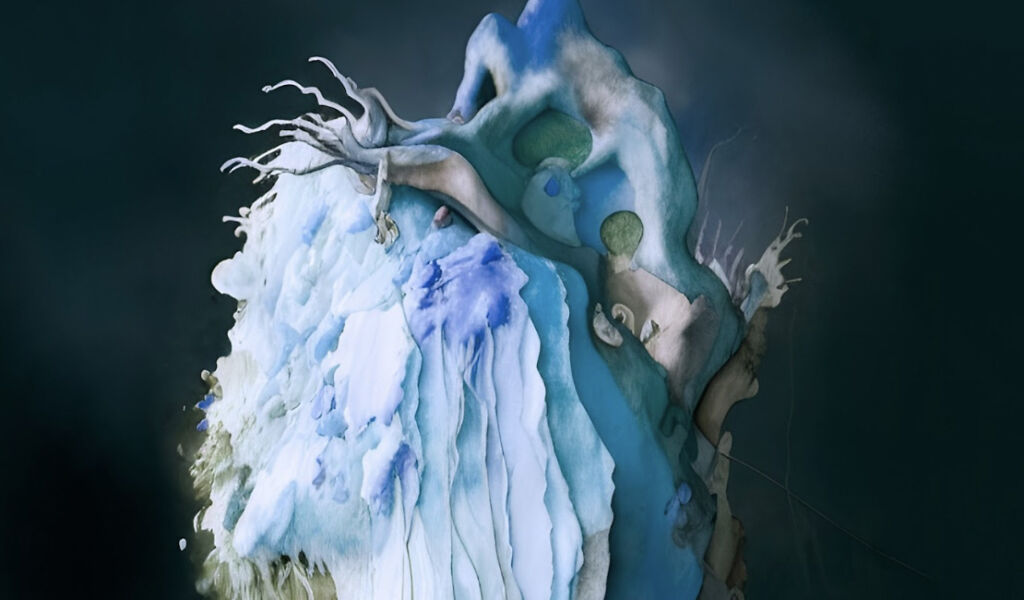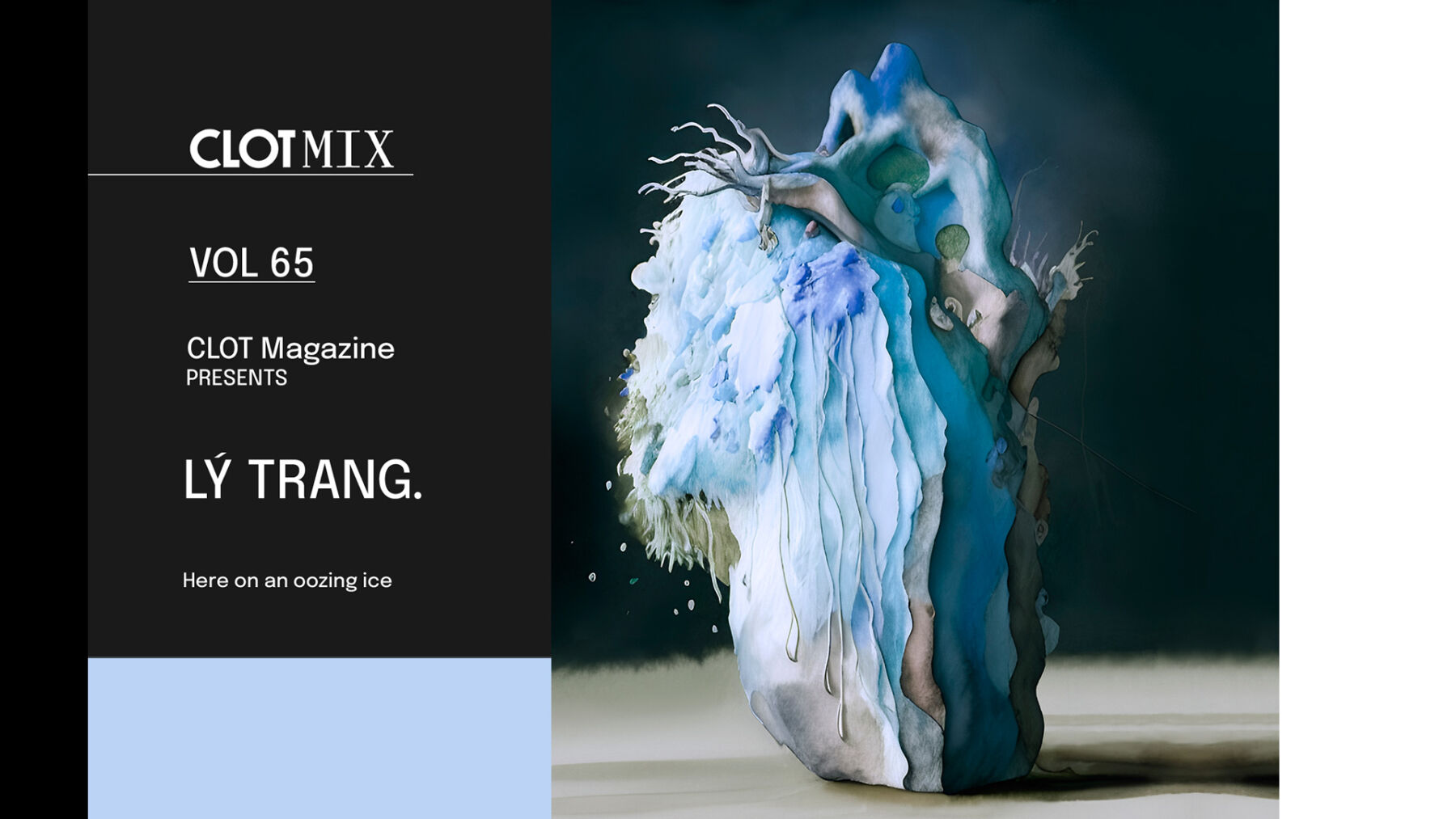Text by CLOT Magazine

For our next mixtape instalment, we welcome Lý Trang, a musician-sound artist who will unveil a haunting musical storytelling piece arranged as an abstract dialogue around time travelling.
Born and raised in the mountains of Northeast Vietnam, Trang’s experiments with hollow rhythms follow folkloric instrumental phrases, and the music buzzes widescreen magic. Moving to Vietnam’s capital Hanoi for school, she connected with the local underground scene, joining Rắn Cạp Đuôi Collective for a short period before focusing more on her work as a multimedia artist. In 2018 she self-released ‘Snail Skeleton’, an album that hints at her sonic interests and various live-scoring commissions, soundtracks and installation works.
Recently she released her second album, Syenite (Subtext 2023), grounded in a sense of alienation, first when she moved to Hanoi for school and later when she relocated to Moscow just a few months before the Russian invasion of Ukraine. In the Russian capital, her separation from home cracked open a deep yearning that swallowed up the erupting geopolitical uncertainty and disillusion, crystallizing into the album’s 10 electro-acoustic tracks.
Last year she also released her debut film Sisyphus’s Cat a conceptually complimentary short that charted the search for a lost pet in a parallel universe, and her music follows a similar trajectory, interpreting interlocking themes sonically instead of visually.
The mix she has prepared for us, she says, is a musical storytelling piece arranged as an abstract dialogue between the captain of a time machine and a girl who wants to be transferred to the future. The conversation is sometimes highlighted and sometimes escaped into layers of music, untangled by the thrill of technology in its content and way of producing sounds. The “captain” voice was amped through a vocoder, which dragged my voice down to a voice of a non-human character. In this sense, I tried to constantly call to mind human scales of time, science, presence and sustaining—even if only in their defamiliarizing absence. And I lean into the aesthetics of alienation, trying to imagine the world of immortal and forever-sustaining entities in the future and questioning that idea”.
Your second album, Syenite, follows your self-released Snail Skeleton and various live-scoring commissions, soundtracks and installation works. What has your creative process been like for this release? Has it changed from your previous works?
In the beginning process of making Snail Skeleton, I would say I’m a musician after I started scoring soundtracks, and, at some points, I mentioned myself as a sound artist when I had some sound installations. I recently attempted to make my first film, and I planned to combine multimedia tools for my future works. So, for ‘Syenite’, I still love the idea of using the traditional music elements from my hometown, but I think it shouldn’t be the only choice. I tried to diversify my choice of materials and my method so it wouldn’t limit my translation, including the different sonic elements and genres.
I also think it’s not necessary to be just music but any medium that allows me to express myself. I challenged myself to make a music video for ‘Featherbrain’, dancing and drawing for the animation video ‘I’m ready to be any animal that’s whistled’. So probably the biggest change now is that I wouldn’t want to label myself anything, as labelling sometimes gives me this invisible frame that always encourages me to break out. I want to try more to blur the boundaries of different art forms. Maybe I’m just a content provider, haha.
Syenite is grounded in alienation, first when you left home and moved to Hanoi and later when you relocated to Moscow just a few months before the Russian invasion of Ukraine. How do you translate this sense of alienation into sounds?
The time I spent making my Syenite was a 3-year journey with interruptions in between because I realized that I needed more silence for continuity. I didn’t expect the Syenite orientation to be dark at the start. Still, it’s undeniably a reflection of a stressful and arduous time living in an isolated part of the world, where heavy war news is scattered daily. I gathered my emotions during that time, the feeling of being luxuriant and peeling, laden and spreading, but also calming and silent sometimes so that I, as the first listener of the album, can feel at ease for a little while.
You embed your experiences into each track, abstracting traditional elements like gongs and indigenous woodwind instruments with anxious digital processes, blurring through folk, experimental, jazz and dark ambient landscapes. What were you technically and conceptually (if so) exploring with this new album?
Indigenous music had an unconscious influence on my childhood. The rustic sounds and bouncing melodies with many mountainous echoes of ‘dan tinh’ are always familiar. When I started learning guitar, I learned alternative tuning from Joni Mitchell and variations on different scales by David Pajo. As I learned more electronic instruments, I was influenced by many of my favourite genres and artists. Still, at the same time, I learned from them how to approach music like a blank slate, completely open-minded and unconventional. I guess I tried to explore the music-making process with that mindset and try to put aside the boundaries of genres.
You were born in Northwest Vietnam and have lived in Hanoi and Moscow. How has it influenced the feeling of not belonging in your music production/work?
I think the feeling of being home is not about a place but more about community and the safe feeling that the environment creates for you. I guess immigrant belonging is something you can slowly build through interaction. Hanoi and different cities in Vietnam give me that kind of belonging. I started collecting some traditional instruments from different places in Vietnam and keeping them as my belongings.
They also appear in my tracks quite often.
When I moved to Moscow, I had a limited choice of instruments, so at first, I tried hard to resemble the sounds that my old instruments in my hometown could make. It’s like an alienation firstly from my instruments. But after a while, I feel more comfortable ‘trusting’ my digital stuff, making the best use of them and building a better relationship with them. I also slowly incorporate more still life within my current work, feeling a strong urge to communicate with my inner self, expressing and translating to build a microhabitat of sounds that can make me feel calm and just be.
What are your main inspirations for your artistic practice these days? What have you been most excited about recently?
I fell in love with the animation-making process after ‘I’m ready to be any animal that’s whistled’ and I’m excited to be more involved in soundtrack scoring for more in the future…






